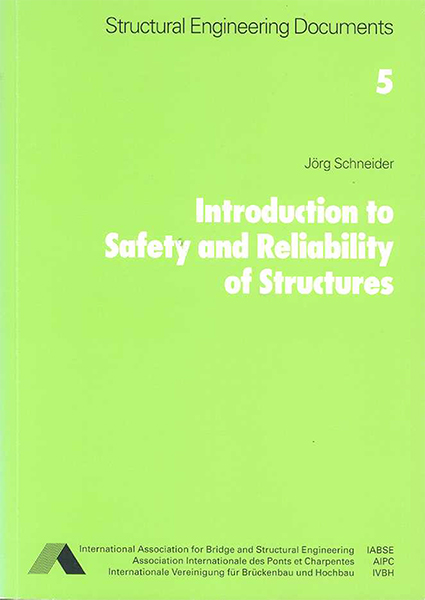Introduction to safety and reliability of structures

|
|
|||||||||||
Détails bibliographiques
| Auteur(s): |
Jörg Schneider
Ton Vrouwenvelder |
||||
|---|---|---|---|---|---|
| Médium: | livre | ||||
| Langue(s): | anglais | ||||
| Editeur: | International Association for Bridge and Structural Engineering (IABSE) | ||||
| Publié à: | Zurich, Suisse | ||||
|
|||||
| Page(s): | 148 | ||||
| Nombre total de pages (du PDF): | 164 | ||||
| Année: | 1997 | ||||
| ISBN-10: | 385748151X | ||||
| ISBN-13: | 978-3-85748-151-2 | ||||
| DOI: | 10.2749/sed005 | ||||
| Édition: | 3 | ||||
| Collection: | Structural Engineering Documents (No. 5) | ||||
| Couverture: | broché | ||||
| Remarques: |
Society expects that buildings and other structures are safe for the people who use them or who are near them. The failure of a building or structure is expected to be an extremely rare event. Thus, society implicitly relies on the expertise of the professionals involved in the planning, design, construction, operation and maintenance of the structures it uses. Structural engineers devote all their effort to meeting society’s expectations effi ciently. Engineers and scientists work together to develop solutions to structural problems. Given that nothing is absolutely and eternally safe, the goal is to attain an acceptably small probability of failure for a structure, a facility, or a situation. Reliability analysis is part of the science and practice of engineering today, not only with respect to the safety of structures, but also for questions of serviceability and other requirements of technical systems that might be impacted by some probability. The present volume takes a rather broad approach to safety and reliability in Structural Engineering. It treats the underlying concepts of safety, reliability and risk and introduces the reader in a fi rst chapter to the main concepts and strategies for dealing with hazards. The next chapter is devoted to the processing of data into information that is relevant for applying reliability theory. Two following chapters deal with the modelling of structures and with methods of reliability analysis. Another chapter focuses on problems related to establishing target reliabilities, assessing existing structures, and on effective strategies against human error. The last chapter presents an outlook to more advanced applications. The Appendix supports the application of the methods proposed and refers readers to a number of related computer programs. This book is aimed at both students and practicing engineers. It presents the concepts and procedures of reliability analysis in a straightforward, understandable way, making use of simple examples, rather than extended theoretical discussion. It is hoped that this approach serves to advance the application of safety and reliability analysis in engineering practice. The book is amended with a free access to an educational version of a Variables Processor computer program. FreeVaP can be downloaded free of charge and supports the understanding of the subjects treated in this book. |
||||
| Acheter chez: | |||||
| Copyright: | © International Association for Bridge and Structural Engineering | ||||
| License: | Cette oeuvre ne peut être utilisée sans la permission de l'auteur ou détenteur des droits. |
||||
